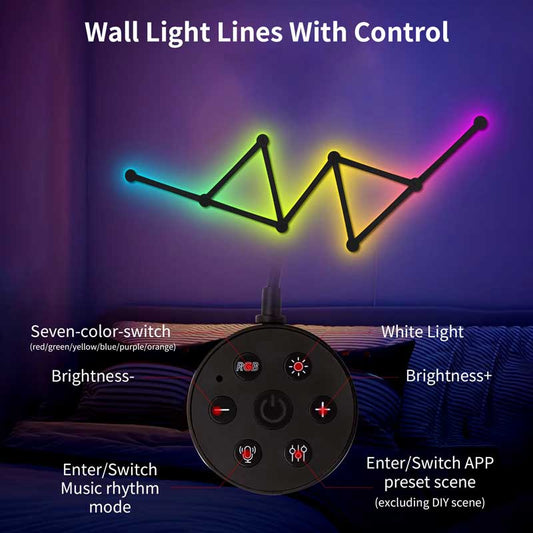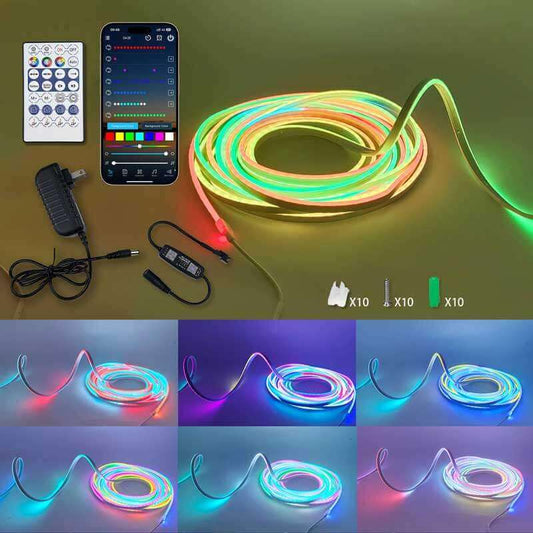How do I get sun in my shady garden?
Share
If you have a shady garden and want to get more sun, there are several strategies you can try to increase natural light exposure for your plants. While you can't change the orientation of your garden or the position of buildings or trees, you can implement some creative solutions to maximize the light that does reach your garden. Here are some effective ways to get more sun in a shady garden:
1. Prune Trees and Shrubs
Overgrown trees and shrubs can block sunlight, making your garden too shady. Pruning these plants to reduce their canopy can allow more light to penetrate the ground.
- Remove Overhanging Branches: If your trees or tall shrubs are blocking light, consider selectively removing branches that block sunlight from reaching the garden floor.
- Thin Out Dense Foliage: In the case of shrubs or hedges, thinning out the dense foliage can allow more light to filter through to the plants below.
2. Use Reflective Surfaces
Reflective surfaces can bounce light into shaded areas of your garden. By strategically placing mirrors or other reflective materials, you can brighten up dark corners.
- Mirrors: Large garden mirrors placed opposite a light source (like a window or a sunny part of the garden) can reflect light into shaded areas.
- White Fences or Walls: Painting fences or walls white, or using light-colored surfaces, can help reflect light into your garden.
- Reflective Garden Panels: Specially designed reflective garden panels can be placed to direct sunlight towards shady spots.
3. Install Light-Colored or Reflective Mulch
Light-colored mulch, like white or silver, can help reflect sunlight back onto the plants, giving them a little extra light. Additionally, it brightens up the garden while helping to retain moisture and suppress weeds.
- Gravel: White or light-colored gravel can also be used to fill empty spaces or around plants to reflect light.
- Reflective Ground Covers: There are reflective ground covers designed to maximize the light that reaches your plants. These are often used in vegetable gardens but can be applied to ornamental gardens as well.
4. Use Vertical Gardening Techniques
Vertical gardening allows you to grow plants in areas that don't get a lot of sunlight by taking advantage of available vertical space.
- Climbing Plants: Consider growing climbing plants (such as ivy, roses, or clematis) on trellises, arbors, or fences that are exposed to sunlight. These plants can help draw attention away from the shady areas and add height and greenery to your garden.
- Green Walls: You could also create a vertical garden or living wall with plants that thrive in low light, which can help to make better use of available sunlight.
5. Introduce Light Gardens or Solar Lighting
While this won't increase the natural sunlight in your garden, adding artificial light can help brighten shaded areas in the evenings and nights.
- Solar Lights: Use solar-powered garden lights to illuminate dark areas, making your garden feel brighter and more inviting after sunset.
- Grow Lights: If you're growing plants indoors or in shaded spots, consider using LED grow lights or fluorescent lights to supplement natural sunlight and boost plant growth.
6. Use Shade-Tolerant Plants
If it’s difficult to get more sunlight in your garden, consider embracing plants that thrive in low-light conditions. This can help fill in shaded areas without the need for additional sunlight.
- Shade-Tolerant Plants: Ferns, hostas, astilbes, and impatiens are all great examples of plants that grow well in the shade.
- Ground Covers: If you're looking to cover a shaded area, ground covers like moss, ivy, or creeping thyme can thrive in low-light conditions.
7. Trim Overhanging Structures or Roofs
Sometimes, overhanging structures like pergolas, awnings, or overhanging eaves can block sunlight. If feasible, consider adjusting or removing these structures to let more light into the garden.
- Pergolas: If you have a pergola or covered structure that is casting too much shadow, you could add retractable or removable panels, or even adjust the placement to let more light through.
- Decks or Patios: Large decks or patios that extend into the garden can cast a lot of shade. Raising the height of the deck or using transparent materials for the surface could allow more light through.
8. Utilize Solar Water Features
Adding a water feature like a solar fountain can help illuminate a shady garden. Solar-powered water features don’t require electricity, and their reflective surfaces can help increase the amount of light in shaded areas.
- Solar Fountains: A small solar-powered fountain or birdbath can add both light and movement to shaded spaces.
9. Reposition Plants
Sometimes, simply moving plants around can help them get more sunlight. If you have potted plants or movable garden beds, you can shift them to a spot with more light.
- Move Potted Plants: Pots can be easily moved to sunny spots. Rotate them periodically to ensure they get balanced sunlight exposure.
- Raised Beds: Raised garden beds can be repositioned to areas where they can receive more sunlight if the current spot is too shaded.
10. Install a Skylight or Roof Window
If your garden is attached to a building, you might be able to install a skylight or roof window above the garden to bring in more natural light. This can be especially helpful for indoor-outdoor spaces or gardens that are shaded by a roof or overhang.
11. Consider Solar-Powered Shades
In areas where it's difficult to block out the sun (for instance, under a tree or a roof that can't be altered), solar-powered shades can allow you to control how much light enters your garden.
- Shade Sails: These provide partial shade while still letting some light through, and they can be adjusted to optimize sunlight exposure.
12. Create Reflective Paths or Tiles
Reflective surfaces can help bounce light from sunny areas to shaded corners.
- Reflective Tiles or Stones: Lay reflective tiles or stones in paths or on garden features to amplify the light in shaded zones.
- Glass Walkways: If you're interested in an architectural solution, using glass or clear plastic walkways can bring light to the plants beneath.
Conclusion
If your garden is in a shady area, there are numerous ways to get more sunlight or make the most of what little light you have. Pruning trees and using reflective materials are great ways to increase sunlight, while incorporating vertical gardens and light-colored surfaces can help create a more inviting, brighter space. Additionally, using shade-tolerant plants will ensure that your garden still flourishes despite limited light.
By combining natural light optimization with thoughtful garden design, you can turn your shady garden into a vibrant and welcoming space!




